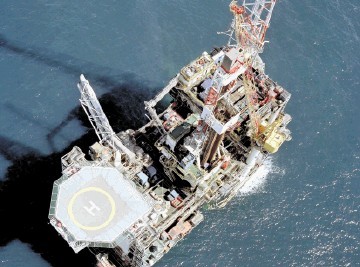
When speaking to different stakeholders in the industry, there is one common theme. Recovery. Everyone is talking about it.
Rhetorical questions are constantly posed – when does the oil price recover, when do we see increases in capex again, when will we have equilibrium in the drilling market? Such optimism is admirable, but is it misplaced?
As in previous recessions we are also seeing a number of letters of the alphabet being quoted. “Is this a V- or a U-shaped recovery?” Different stakeholders have varying opinions. Earlier in the year there was much more talk around a V-shaped trough on the basis that “oil prices just can’t be this low for too long”.
As the dust settles, however, the consensus is moving more to a U-shaped outlook – one where a steep decline is followed by a period of three to nine months of low pricing before recovery, in this case by the second half of this year or early 2016.
It’s looking less likely that a V-shaped recovery will happen and that a U-shaped is more likely. However, a new term is entering the fold. The “bath shaped” recovery. This is where we are heading and quite simply there are long-term dangers if we do not.
So what does a bath-shaped recovery mean?
Effectively it’s a sustained, term-based period of lower commodity prices – perhaps for one or two years before improvements are seen.
At this point I don’t see any real catalysts to change this outlook as right now the two key issues that prompted the recession are still persistent and looking likely to worsen.
Problem one was the high inflation in service and equipment provision and massive inefficiency on project management from a cost and time control perspective. Correcting this behavioural and organisational issue takes time.
Over the course of 2015, I expect that inward looking initiatives will take cost of the system and encourage more efficient practices. Assuming the constant pressure of low commodity prices are sustained the benefits of these programmes won’t really be felt until 2016, perhaps 2017.
The big one or problem two as we will call it, is the oversupply of crude in global markets. Yes, Brent and WTI have bounced lately on the back of much reduced active rig count in North America and the consensus view that a 50% reduction in activity will occur through 2015 so constraining new production supply.
Reduced drilling and associated activity will put pressure on production – but this is more long-term. The North American market will still grow production during 2015 in spite of the reduced rig count.
Quite simply, nothing that is happening now is going to alleviate the current oversupply problems in the market – they are still on track to produce an extra 500,000 barrels per day.
The next area of capex reduction is offshore including mature basins and deepwater.
As we all know nothing happens quickly in the offshore environment and those projects that have already gone through their Final Investment Decision will proceed, while those under review will be under more scrutiny and may be delayed or cancelled.
Again, however, nothing material will happen during 2015. The industry has been spending billions on new projects and increasing production supply over the past five years; supply which is due to hit the market this year and next. Slowing activity today will be felt in later years – 2017 – 2020 perhaps – not in the medium term.
Turning to demand, this is increasing for crude but not enough to ease the supply glut. Reduced prices may stimulate more consumption but again this is a medium term impact as markets take time to change behaviours.
The great catalyst for crude demand being the economic growth of the BRIC nations is also not as strong as it was. I don’t think any massive new demand wave is going to hit the market soon.
This is all very well Andrew I hear you say but what does it mean for the UKCS? Well, what’s clear is that there isn’t any sign of a “Get out of Jail” card. Inefficiency and high cost are not going to be supported by commodity price increases.
I doubt very much if they are going to be covered by government subsidy either. I am not saying that the fiscal regime in the UK is appropriate – far from it. It’s evident the tax structure needs to evolve with the maturity of the basin. This said, the Treasury is not going to fundamentally change its regime to protect returns based on inefficiency. Let’s not forget either that taxing E&P or “energy” firms is a popular vote winner.
“Greater collaboration and technology” – that’s the answer I hear all too often. In some respects I agree albeit my interpretation is perhaps somewhat different.
A period of intense competition is needed to strip out inefficiency, including company failure. “Collaboration” comes from getting rid of the peripheral and lacklustre E&P and service businesses, creating a smaller, stronger and more efficient industry.
“Technology” needs to go. Unless there is a market for it and clear and present demand, don’t invest in it and focus on appropriate, fit for purpose, standardised approaches.
A bath is what is needed and has been for some time. The biggest threat to the UKCS is still commodity prices, but if they go up too soon then what?
Andrew Reid is group chief executive of energy consultancy Douglas-Westwood
Recommended for you
